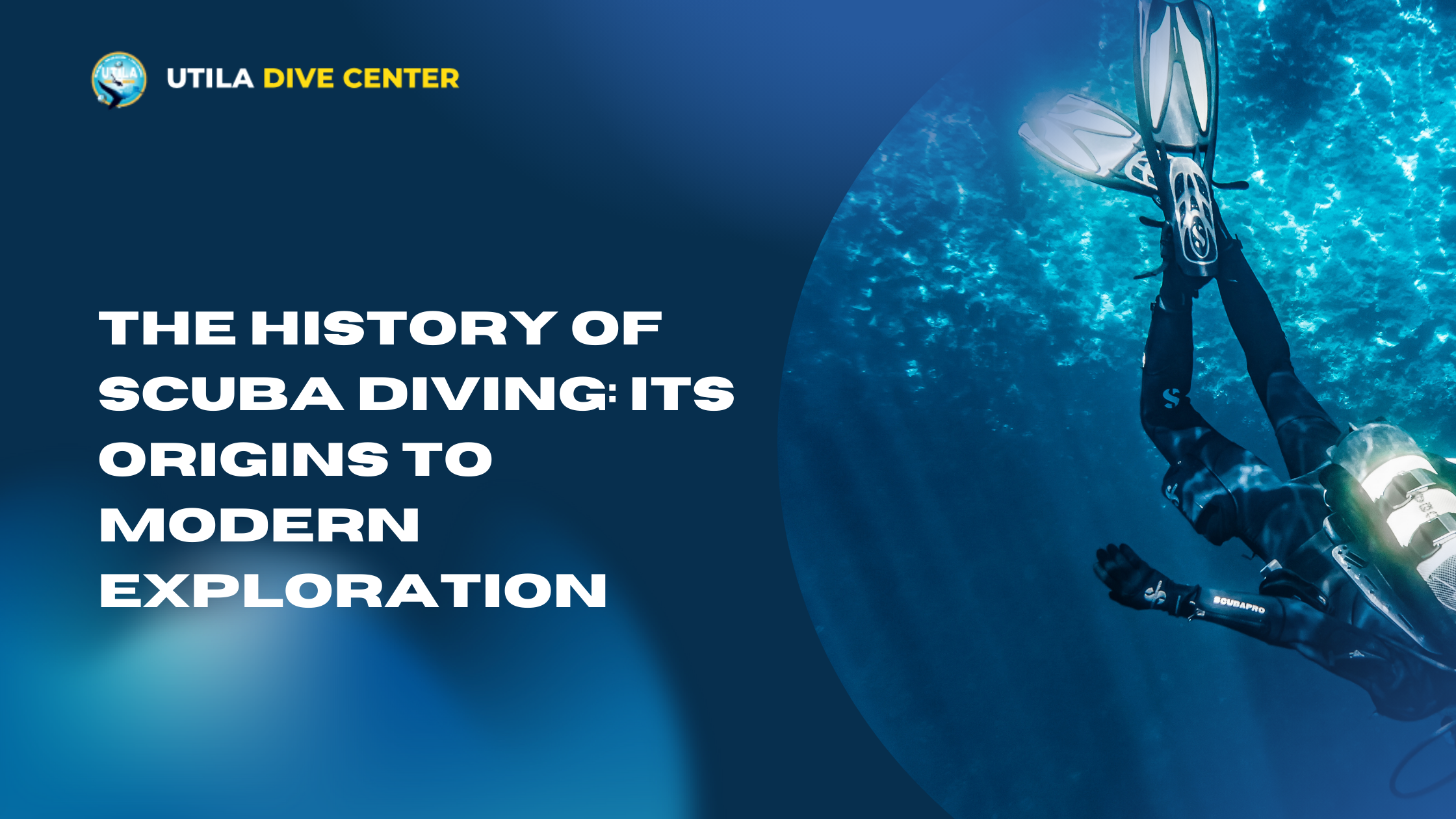
The History of SCUBA Diving: Its Origins to Modern Exploration
The History of SCUBA Diving: Its Origins to Modern Exploration
By: Manny Lagos | Date: 2025-05-16T05:43:52.186Z
SCUBA diving with tanks and fins is not a foreign concept for most of us now, but the roots of underwater exploration go back much further than you can even imagine. Long before Jacques Cousteau and a diver’s first breath from a regulator, smart minds were already finding ways to explore the world beneath the waves.
In this blog, we’ll lay down the history of SCUBA diving, and uncover the SCUBA diving history timeline, – from the earliest beginnings to the cutting-edge solutions that we know today.
So, get ready to know how humans went from holding their breaths to diving deep below the surface with ease!
History of SCUBA Diving
The history of SCUBA diving is a story of curiosity and a burning desire to explore the hidden world that rests beneath the waves. Despite the ancient desire to explore the deep waters, it was only in the 16th century that some real progress was made and for the first time, we were able to get some glimpses of the underwater world.
But that was just the beginning and soon a wave of inventions followed that not only allowed us to see what's beneath the surface but also study and interact with the creatures that inhabit it.
Early Underwater Endeavors
As you already know, humans have always been fascinated with the ocean and have constantly tried to come up with tools and techniques that could help them figure out the mysteries of the blue oceans. But it was only in the last 500 years of scientific revolution that some real progress was made.
On that note, let's take a look at how the timeline of SCUBA diving has evolved over the years.
16th Century: The First Diving Bell
Imagine this: You’re in the 1500s, standing in front of a vast ocean and all you can think about is
“I want to see what’s down there”. What would you do?
Back then you only had one option– a diving bell.
This was basically an upside-down bucket trapped with air, which was lowered into the water to give divers a temporary breathing space. It wasn’t glamorous, but it worked!
However, with this method, you could only stay underwater for a few minutes or up to an hour, depending on the size of the bell you used.
Later in the 17th century, an Englishman named Edmund Halley decided to improve the Diving Bell by adding weighted barrels to pump fresh air, this allowed the dividers to stay submerged for much longer than before.
But advancements didn’t stop there, let's see what came next.
18th Century: The First Air-Supplied Helmets
By the 18th century, inventors were making huge leaps in diving technology.
This time it was a Diving Suit.
Pioneered by British engineer John Lethbridge, these suits were nothing like the SCUBA suits we wear today. Instead, picture a long, capsule-like barrel with a person inside, arms stretched out, gliding through the deep ocean.
Seems a bit awkward, doesn’t it? But it worked and allowed dividers to go deeper and stay underwater for longer. This served as the foundation of the more advanced SCUBA gear we use today and was a major step in the development of SCUBA diving.
Pioneering Advances in Diving Technology
Fast forward to the 19th and 20th centuries– things started to get really exciting during this period. Engineers and inventors were pushing boundaries, and going beyond imagination, leading to the birth of modern SCUBA diving as we know it today.
Henry Fleuss's 1878 Closed-Circuit Rebreather
Once again an English engineer Henry Fleuss, made a groundbreaking discovery– the Closed-Circuit Rebreather (CCR). Now, you might be wondering what this device actually did. Well, this device recycled the exhaled air by removing carbon dioxide (CO₂) and supplied fresh oxygen to the diver, consequently reducing the need to resurface frequently. With this, divers could stay underwater till the oxygen supply lasted.
Believe it or not, CCRs were mainly used by underwater construction workers. But it didn’t take long before this technology found its way into SCUBA systems.
Yves Le Prieur's 1925 Open-Circuit System
Back in 1925, French naval officer Yves Le Prieur came up with an Open-Circuit Breathing System– a major shift from the Closed-Circuit Rebreathers (CCR) divers had been using before.
This happened because CCR had a big problem. There was a risk of carbon dioxide build-up and oxygen toxicity, as gases could not escape into the water and remained trapped within the device. Not exactly an ideal situation, right?
On the other hand, the open-circuit system simplified diving by using compressed air tanks that released exhaled air directly into the water. This made diving much more safer and accessible.
But there was a catch– even though the system continuously supplied air and eliminated the risk of gas imbalances, a lot of oxygen went to waste. This led to shorter dives and less efficiency.
Of course, divers weren’t going to settle for that. The next big invention would soon solve this problem, and take SCUBA diving to the next level!
Cousteau and Gagnan's 1942 Aqualung
Next, came the real game-changer. In 1942, legendary ocean explorer Jacques Cousteau and engineer Émile Gagnan developed the Aqualung, an open-circuit SCUBA system.
For the first time in the history of SCUBA diving, divers could move freely deep in the oceans breathing compressed air through a demand regulator. Aqualung reduced oxygen wastage too, as it only supplied air when the diver was inhaling and not when exhaling.
This was something the deep sea explorers had dreamed of for years and Aqualung made diving possible for people who had previously been hesitant due to technical challenges.
This invention revolutionized underwater exploration and led to the explosion of recreational SCUBA diving.
SCUBA Diving in the Modern Era
By the mid-20th century, SCUBA diving was no longer restricted to just the military or scientists but could be enjoyed by anyone curious to discover the secrets within the oceans.
As technology advanced, diving became safer, simpler, and even more thrilling.
The Rise of Recreational SCUBA Diving
In the 1950s and 60s, organizations like the Professional Association of Diving Instructors (PADI) and the National Association of Underwater Instructors (NAUI) emerged.
These institutions marked a significant shift in the history of SCUBA diving as they started training programs and SCUBA diving certifications in which anyone could enroll and SCUBA diving would soon turn into a sort of sport which anyone could enjoy.
Technological Advancements in the 21st Century
Fast forward to today. With the invention of dive computers, we can now track time, depth and even air supply in real-time. Meanwhile, advanced rebreathers allow us to spend extended hours underwater with minimum bubbles.
To enhance safety, modern underwater communication devices enable divers to stay connected, adding another layer of trust and reliability to the evolution of SCUBA diving.
Cultural and Environmental Impact
What started as a simple curiosity to know the underworld, soon had a massive impact on science, biodiversity conservation and even pop culture. From saving coral reefs to inspiring Hollywood blockbusters, SCUBA diving’s influence runs deep.
Marine Conservation and Awareness
Divers are often the first ones to see the beauty as well as destruction taking place beneath. Organizations like Project AWARE and Reef Check enlist divers to monitor coral health, clean up marine debris, and advocate for ocean protection. Thanks to the activism of SCUBA divers, more and more people are becoming aware of the urgent need to protect our oceans.
SCUBA Diving in Media and Popular Culture
How could Hollywood stay behind? Underwater scenery is used in many movies and documentaries worldwide such as in pictures like The Abyss (1989) and many BBC EARTH documentaries.
Conclusion: Reflection on the journey of SCUBA Diving
From diving bells to today’s advanced rebreathers and dive computers, the history of SCUBA diving is a testament to human fascination and innovation. SCUBA diving went from a means of simply exploring the underwater world to an exciting recreational sport for millions across the globe, in no time!
At Utila Dive Center, we’re proud to be a part of this amazing journey. If you want to try SCUBA diving for the first time or want to go for the PADI divemaster course, join us and experience the ocean like never before!
Ready to dive? Enroll and get SCUBA certified now!
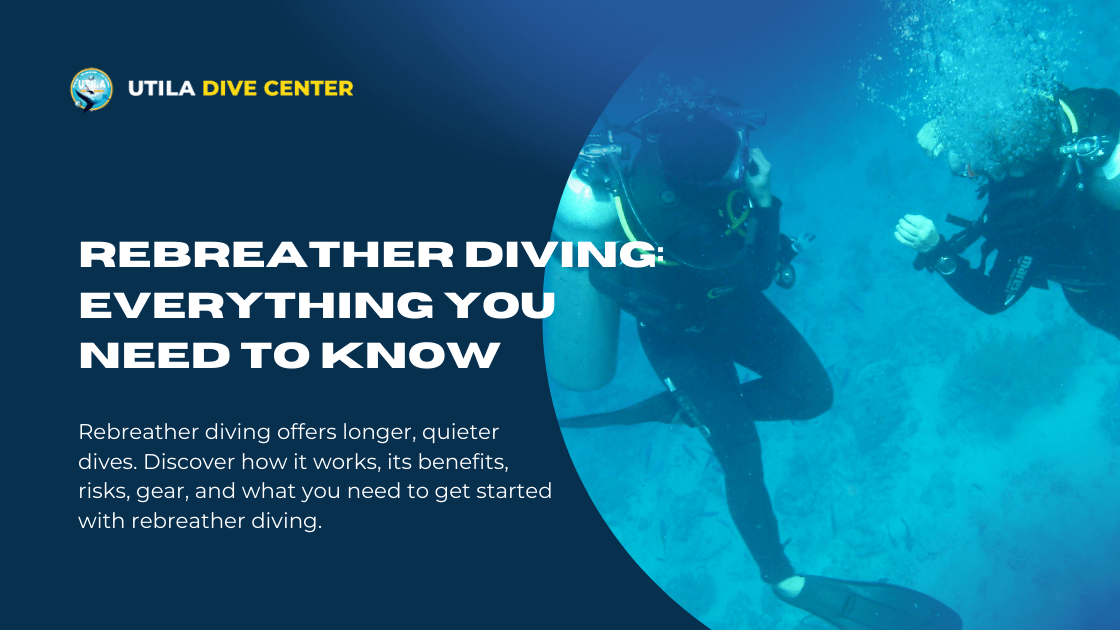
Rebreather Diving: Everything You Need to Know
Rebreather diving offers longer, quieter dives. Discover how it works, its benefits, risks, gear, and what you need to get started with rebreather diving.
Read more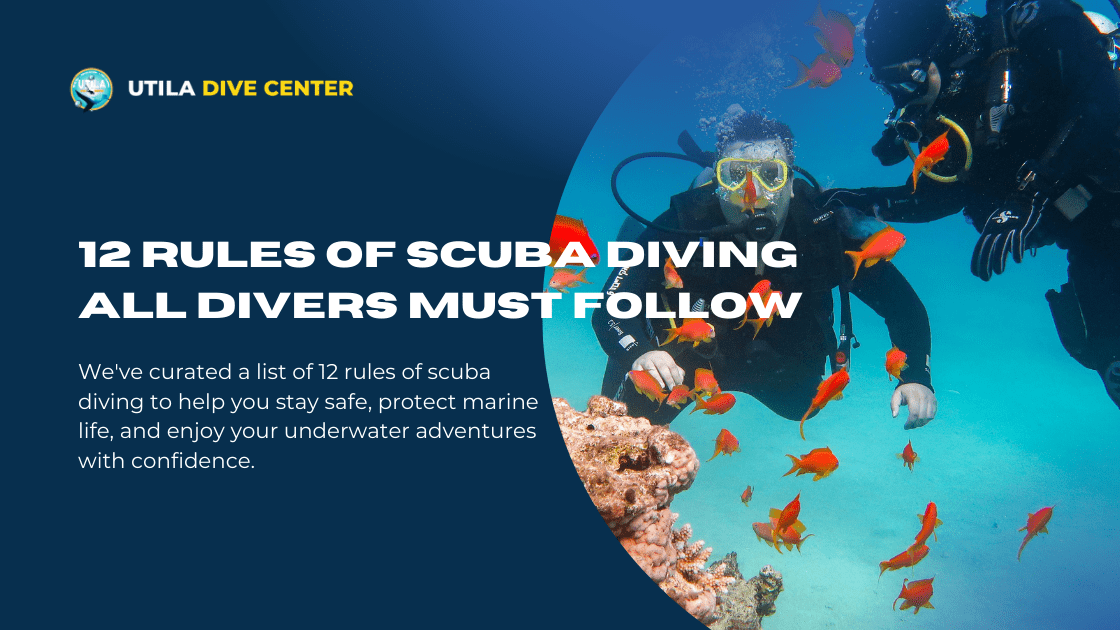
12 Rules of Scuba Diving All Divers Must Follow
We've curated a list of 12 rules of scuba diving to help you stay safe, protect marine life, and enjoy your underwater adventures with confidence.
Read more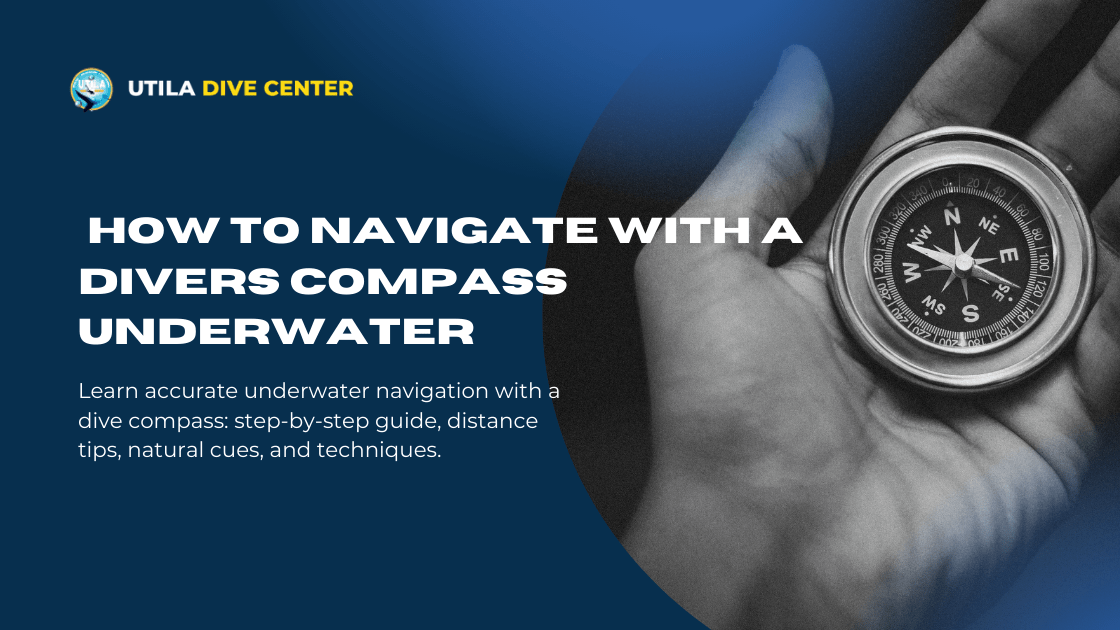
How to Navigate With a Divers Compass Underwater
Learn accurate underwater navigation with a dive compass: step-by-step guide, distance tips, natural cues, and techniques.
Read more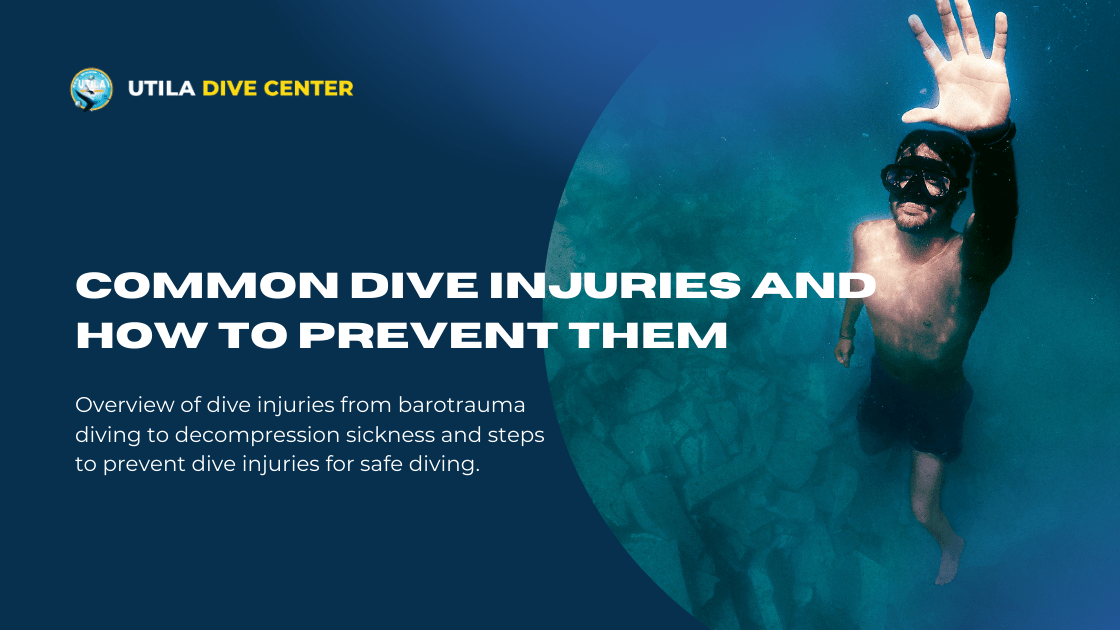
Common Dive Injuries and How to Prevent Them
Overview of dive injuries from barotrauma diving to decompression sickness and steps to prevent dive injuries for safe diving.
Read more